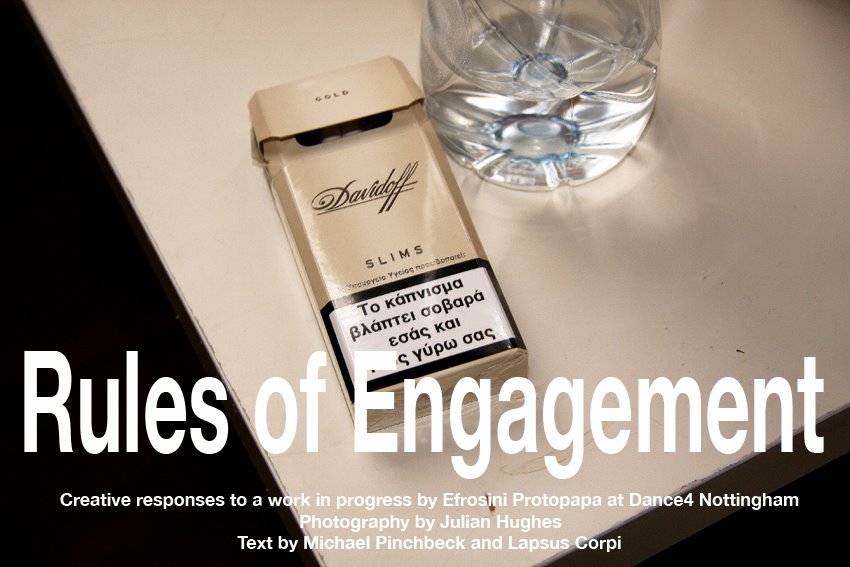One of the most challenging things for me has been to work in a moving piece. The decision to fix the structural framework of the piece and only that feels much more exciting than a ‘fixed’ show. It gives us the opportunity to allow things to happen in the space; and on the other hand that means that things will happen in the space only if we really let them. Any kind of repetition or recalling of a relation/feeling/discovery cannot have neither the freshness of the first time or the scenic maturity of a well-rehearsed piece. So there is no in between. In between situations where I tried to drag past rehearsal experience in new ones and repeat anything in any way simply didn’t work for me. The material kept its freshness by being slightly altered, when nourished by what was happening in the space. And, of course, every ‘past experience’ is there to add to the group’s own layers of communication and complicity, maybe something like another, unwritten this time, rule - the ‘hmhowamigonnasurpriseyouthistime’ rule.

Some questions I have been asking myself:
The first question for me is that of transposition of one art form onto another, from cinema to scenic art. If we put apart the tool of the microphone, what is left that we can call cinematographic? How can we give that quality without its most powerful tools of camera focus, music, and of course editing? Also, as far as the performer is concerned, the stage invites us to make things ‘bigger’ than in real life, and cinema smaller. Is exact imitation the best way to be truthful to a scene or a film when we put it on stage? Or shall we systematically, as we often did instinctively perhaps, try to work out ways of adapting for the stage, so as to be faithful not to the form but to the spirit of the film. But then, would that be cinematographic? Is it possible to be scenematographic? :-p
The second question that occurred to me was that of narrative. What is left to the person who does not follow, or play the game with us? What is there to see? It seems that the parallel story would be that of the performers, being in and out of a part, being in between characters and self, their journey anyhow. I loved it when in the midst of a show-time vladavoum action moment, someone was left alone making a personal confession to the audience or to no-one. As if all this was in fact the set for our big struggle for expression as artists, through games, characters, or directly through us... Anyway, trying to imagine myself on the other side, I believe I would find some satisfaction in observing some kind of consistency in the personal journeys of the performers, and the relations they do or do not build.
GIORGOS

No comments:
Post a Comment